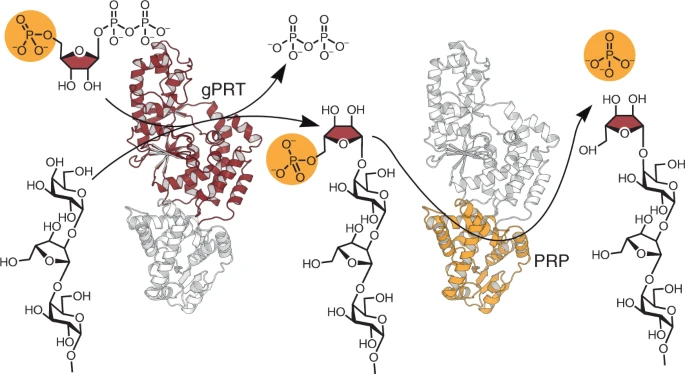
 中央研究院 生物化學研究所
中央研究院 生物化學研究所
Bacterial surface polysaccharides are assembled by glycosyltransferase enzymes that typically use sugar nucleotide or polyprenyl-monophosphosugar activated donors. Characterized representatives exist for many monosaccharides but neither the donor nor the corresponding glycosyltransferases have been definitively identified for ribofuranose residues found in some polysaccharides. Klebsiella pneumoniae O-antigen polysaccharides provided prototypes to identify dual-domain ribofuranosyltransferase proteins catalyzing a two-step reaction sequence. Phosphoribosyl-5-phospho-D-ribosyl-α-1-diphosphate serves as the donor for a glycan acceptor-specific phosphoribosyl transferase (gPRT), and a more promiscuous phosphoribosyl-phosphatase (PRP) then removes the residual 5'-phosphate. The 2.5-Å resolution crystal structure of a dual-domain ribofuranosyltransferase ortholog from Thermobacillus composti revealed a PRP domain that conserves many features of the phosphatase members of the haloacid dehalogenase family, and a gPRT domain that diverges substantially from all previously characterized phosphoribosyl transferases. The gPRT represents a new glycosyltransferase fold conserved in the most abundant ribofuranosyltransferase family.
